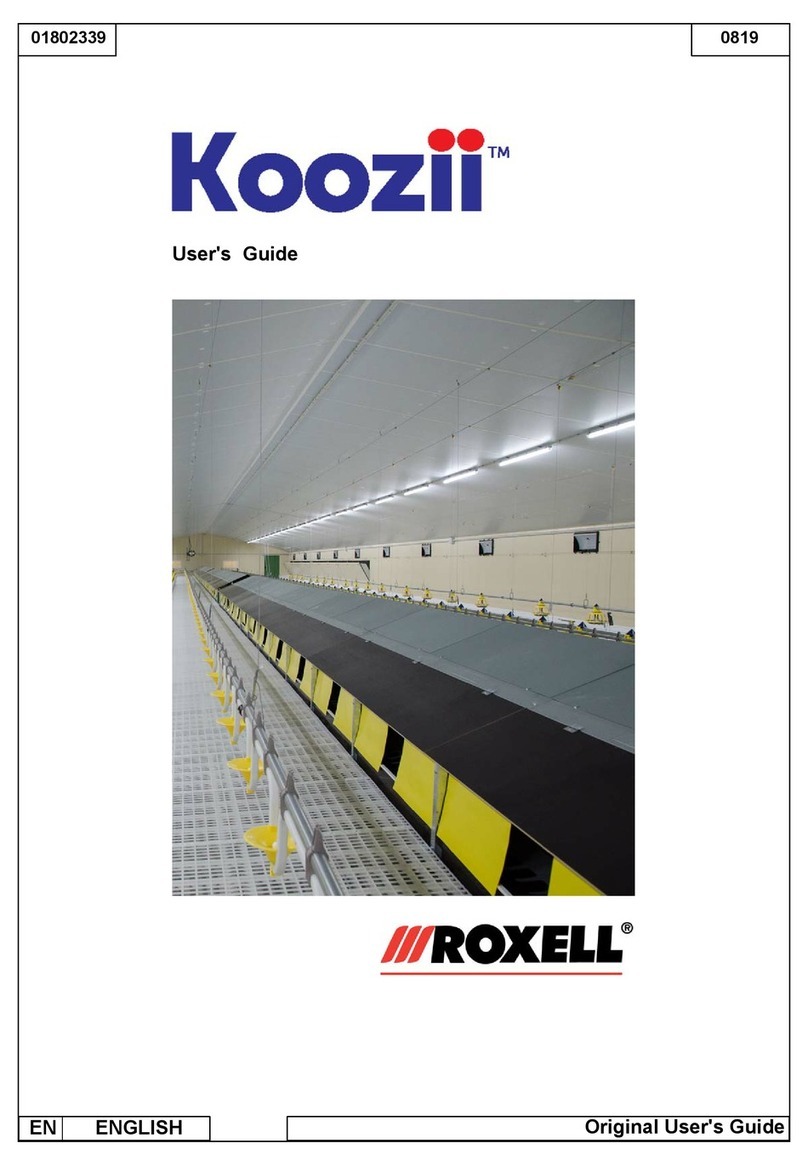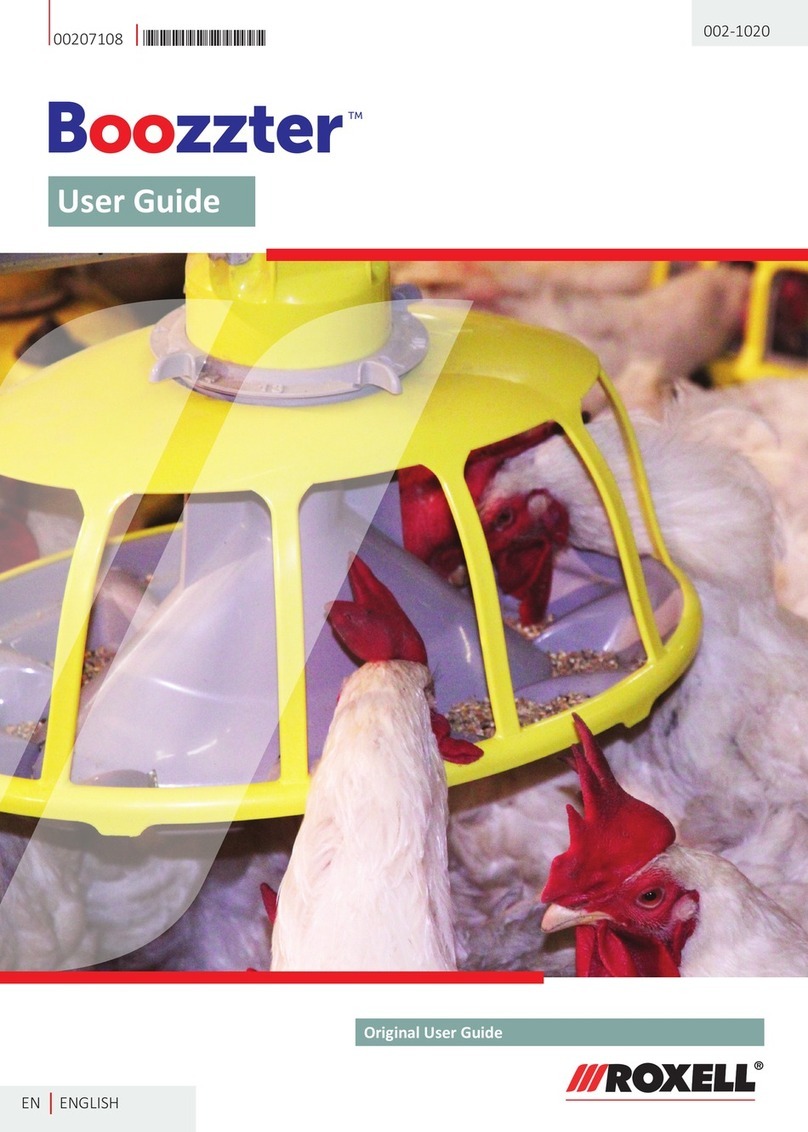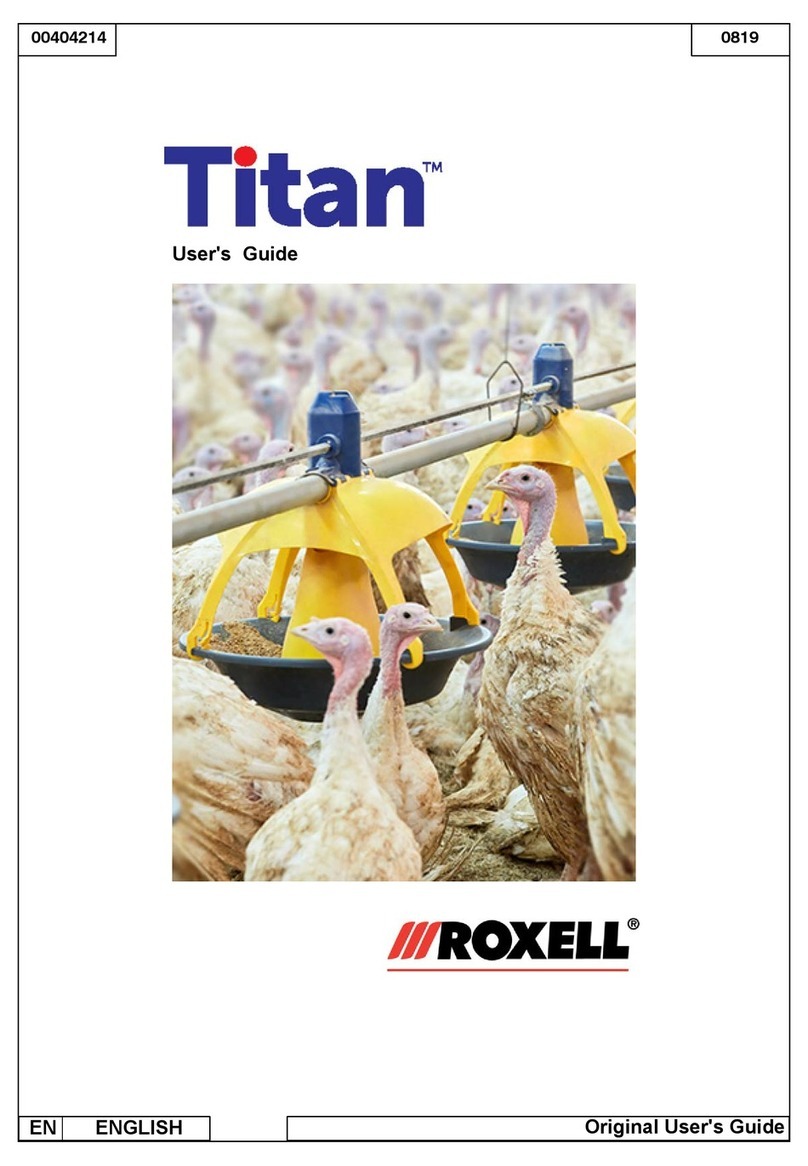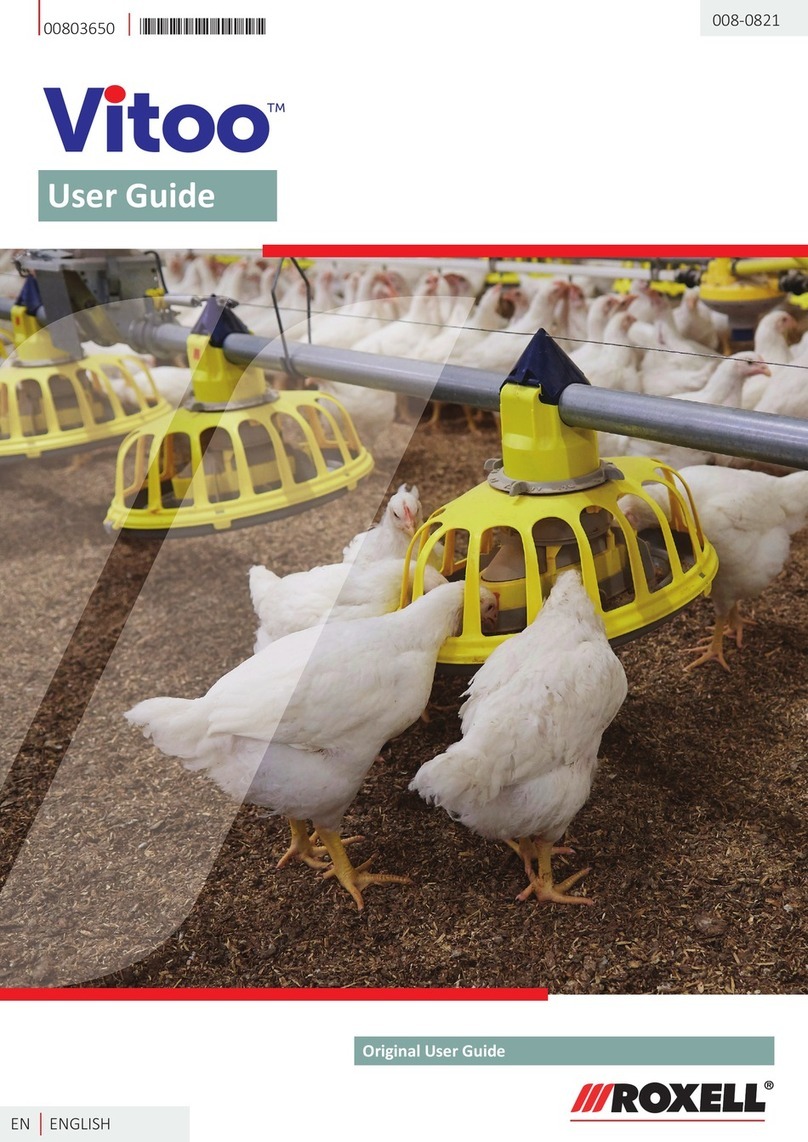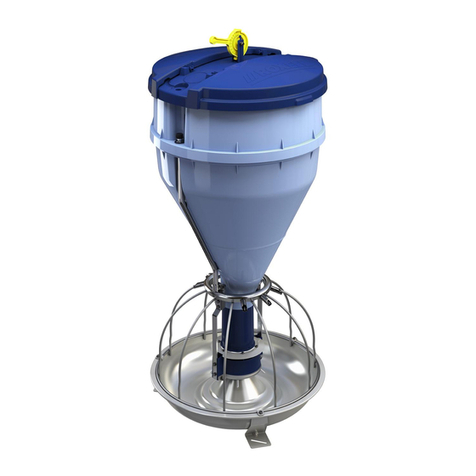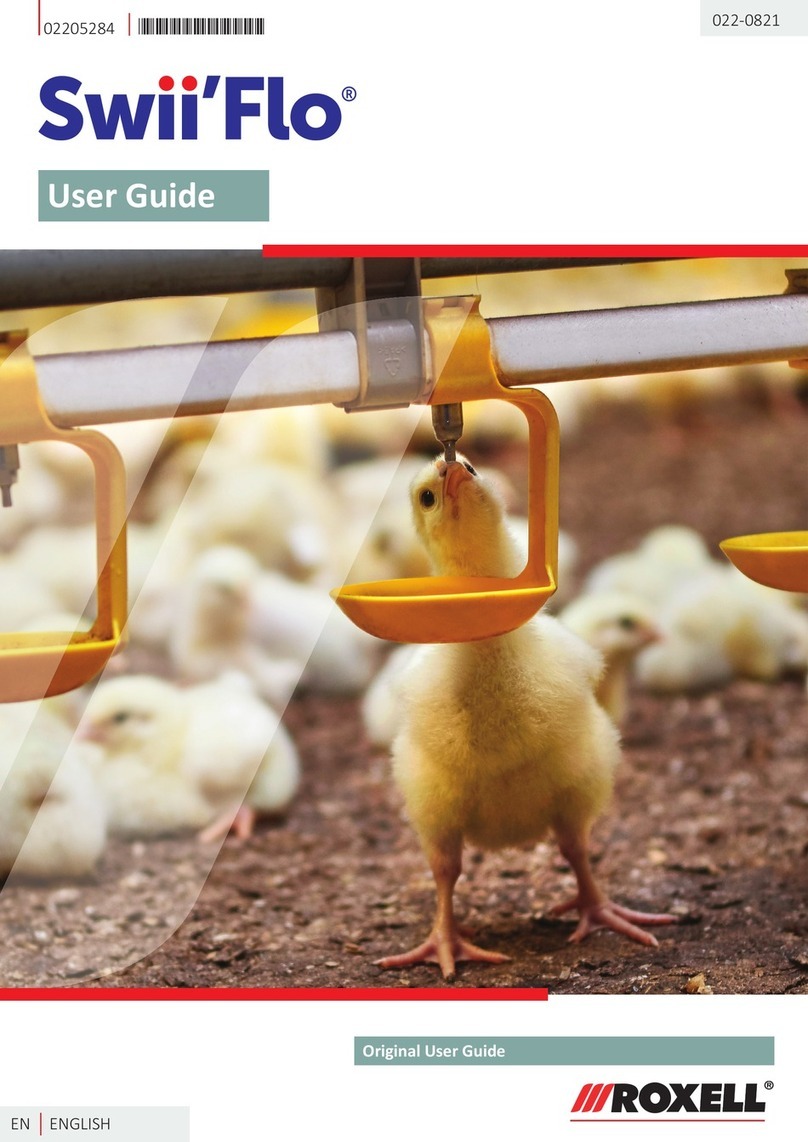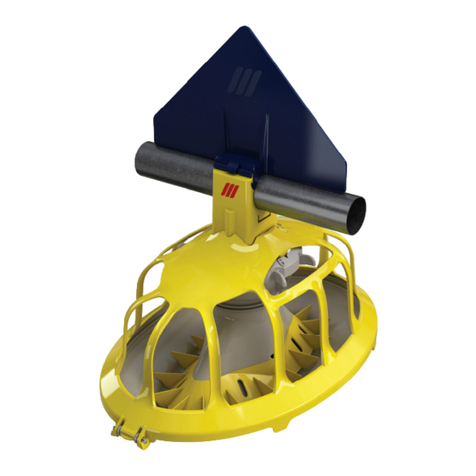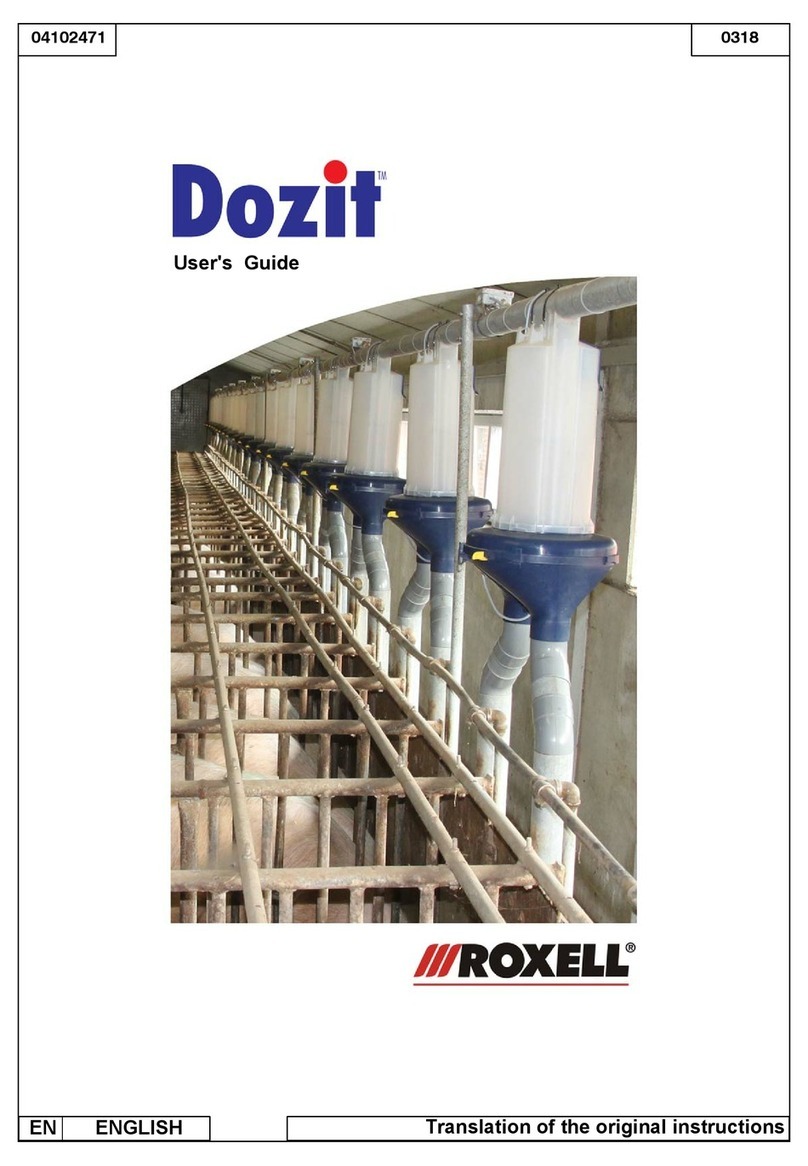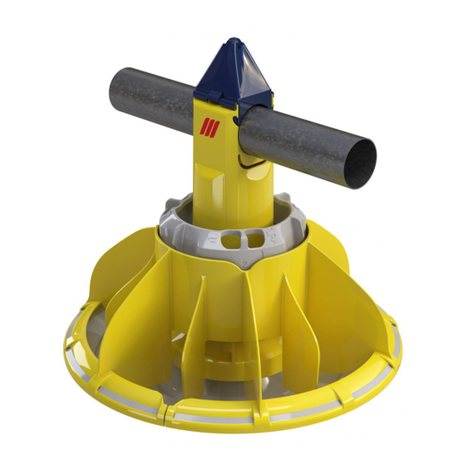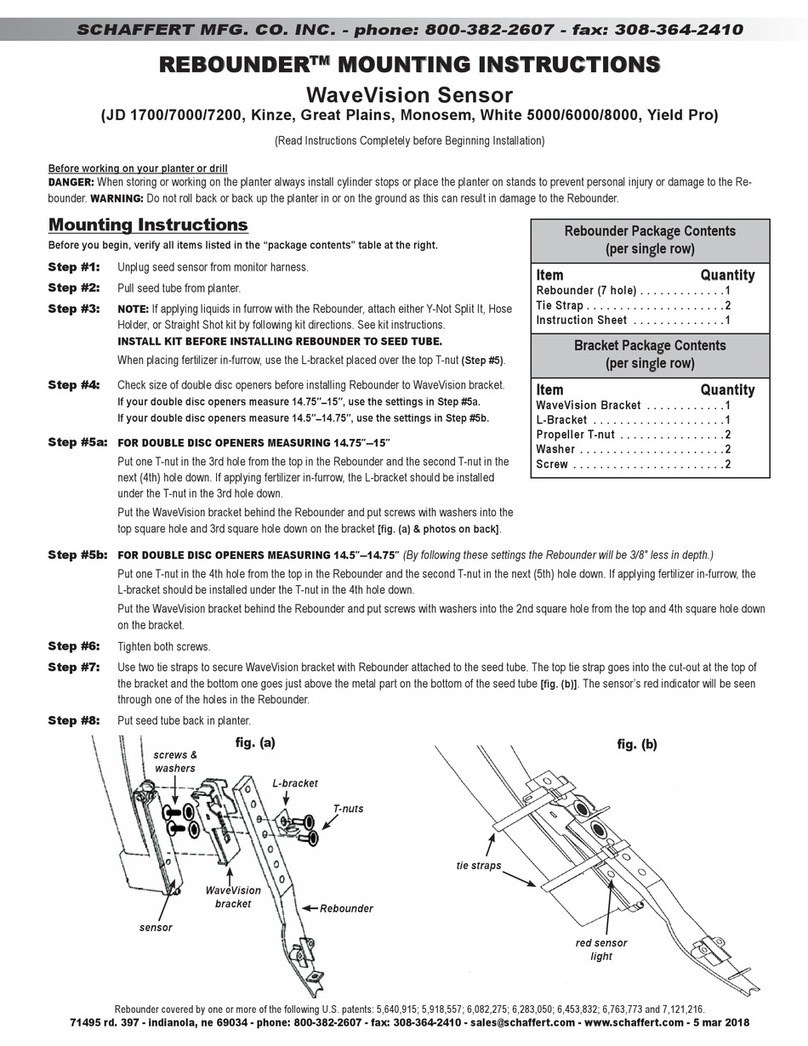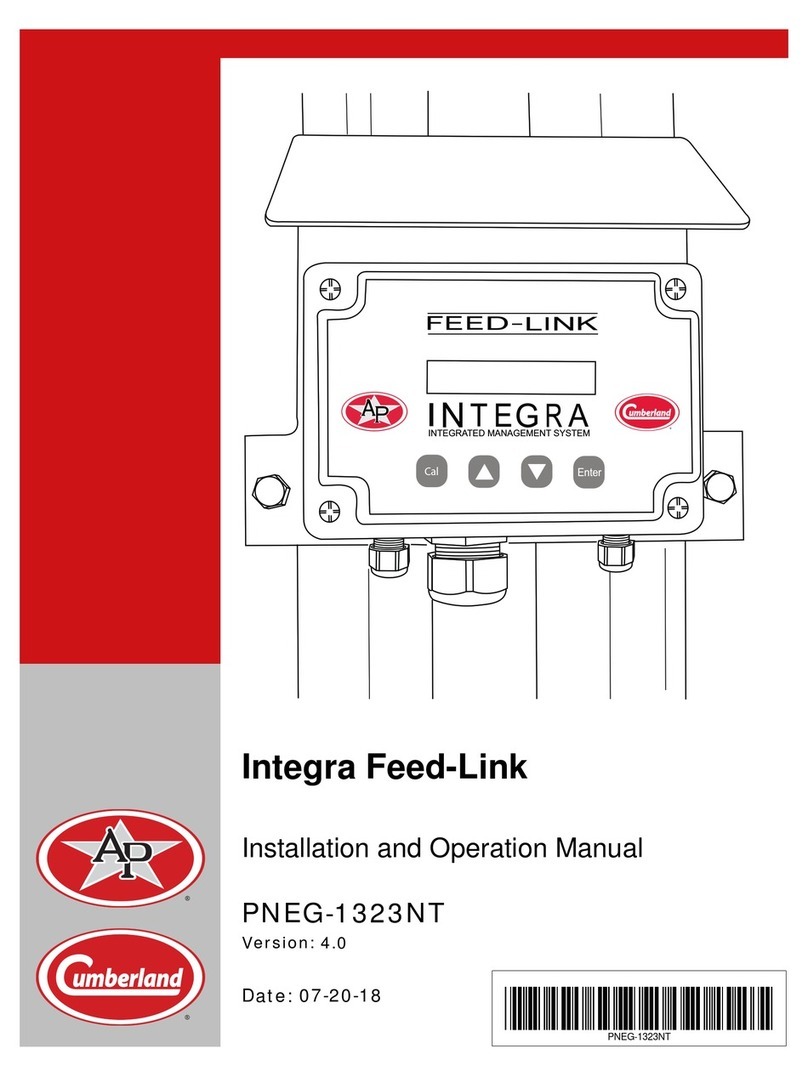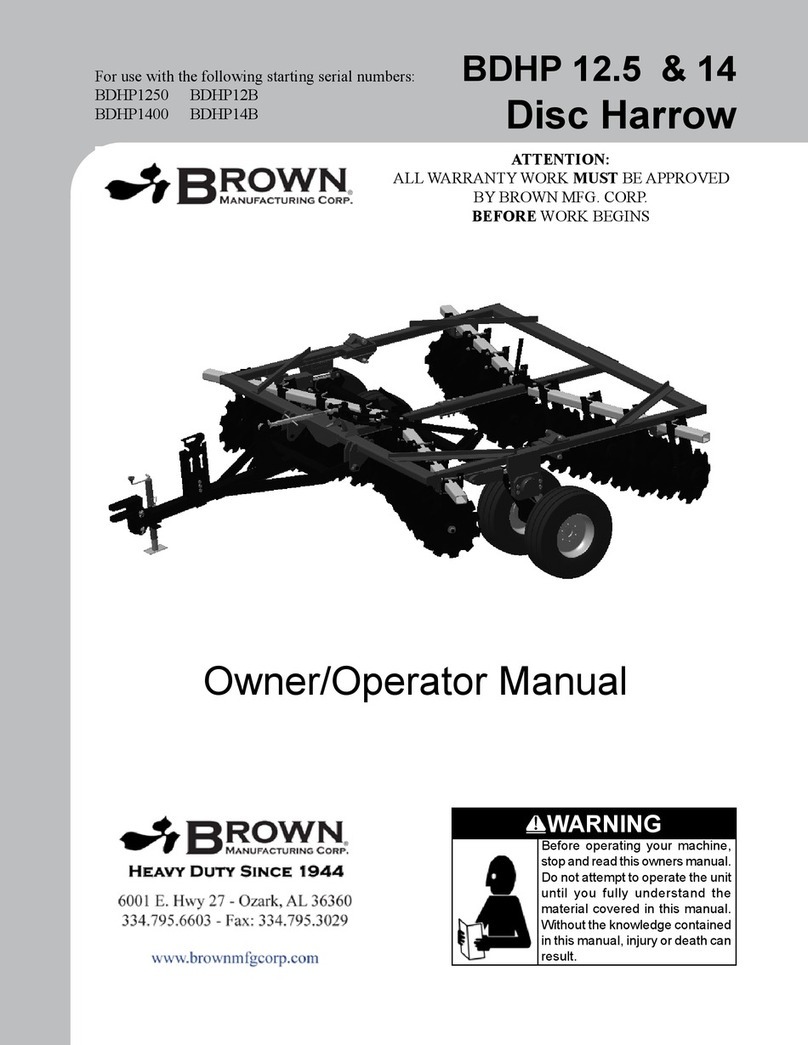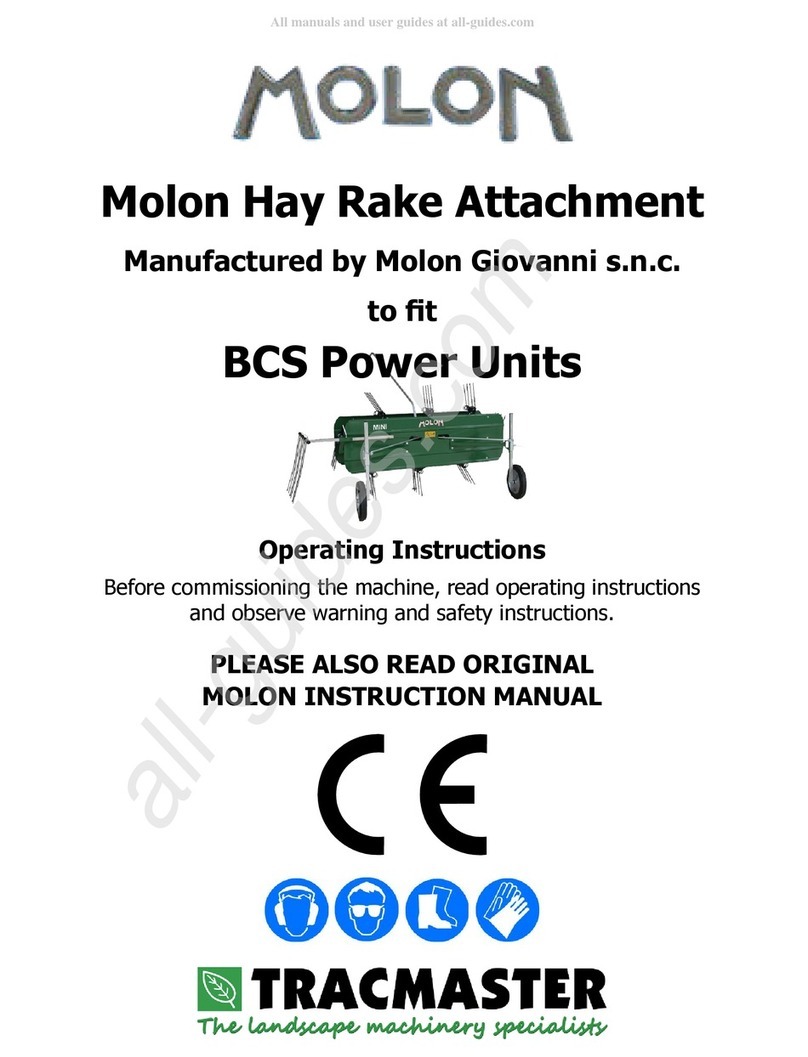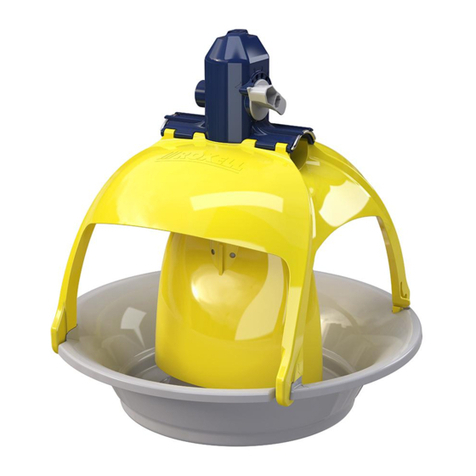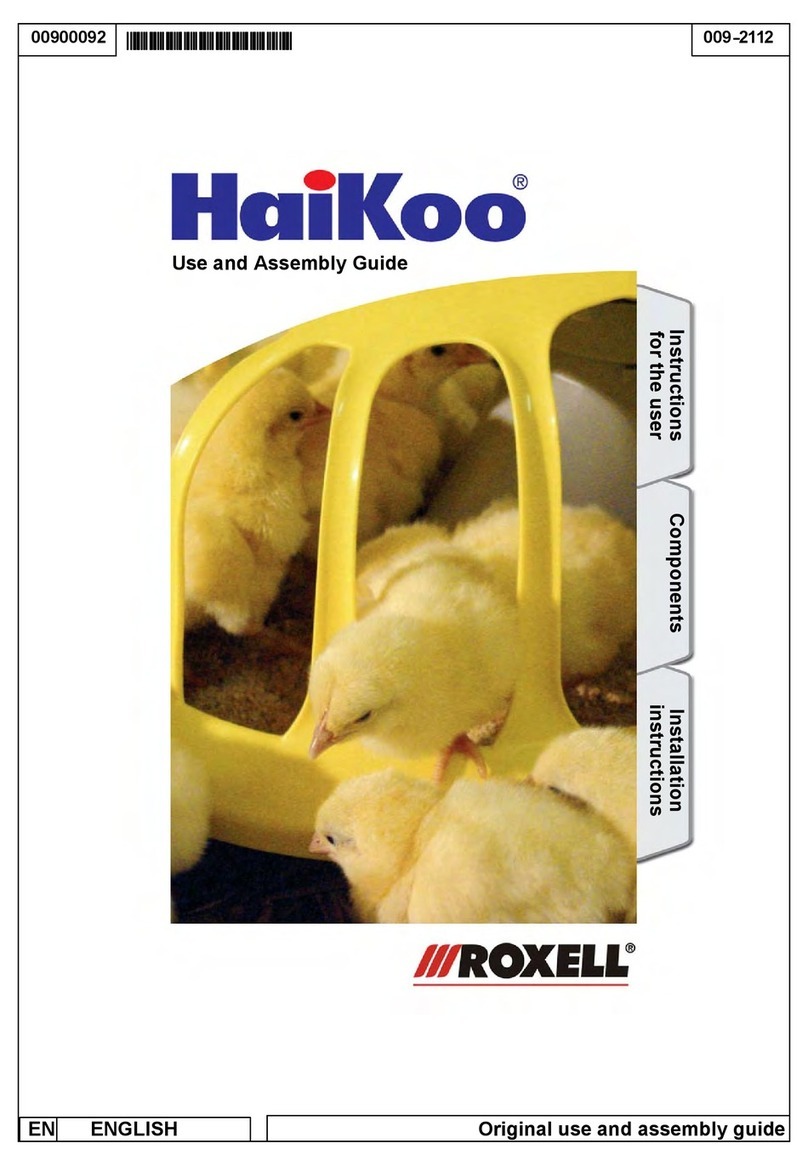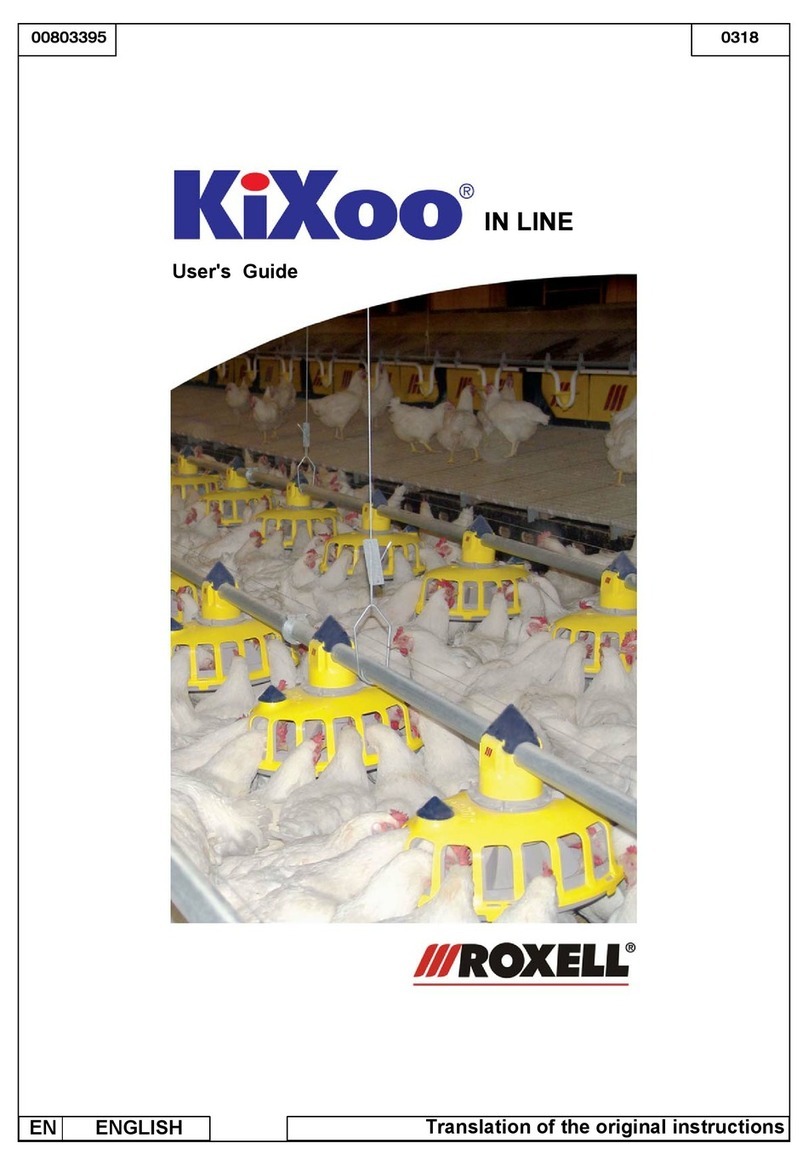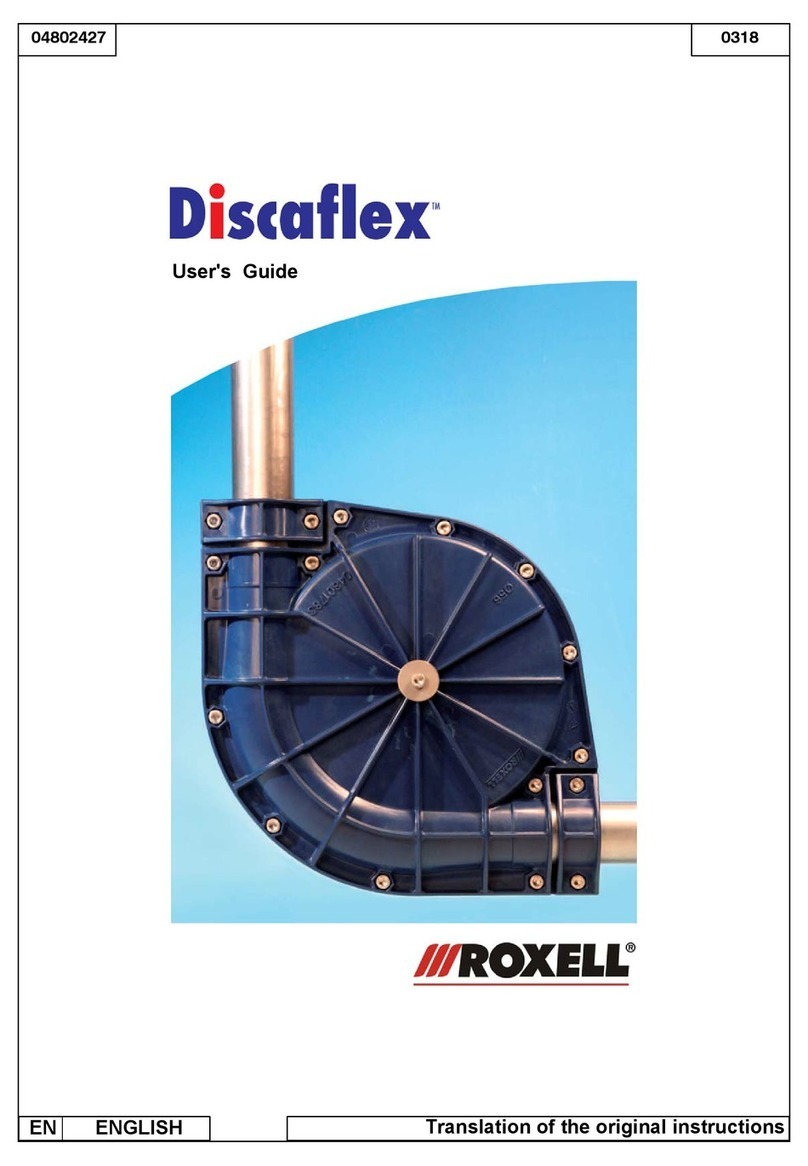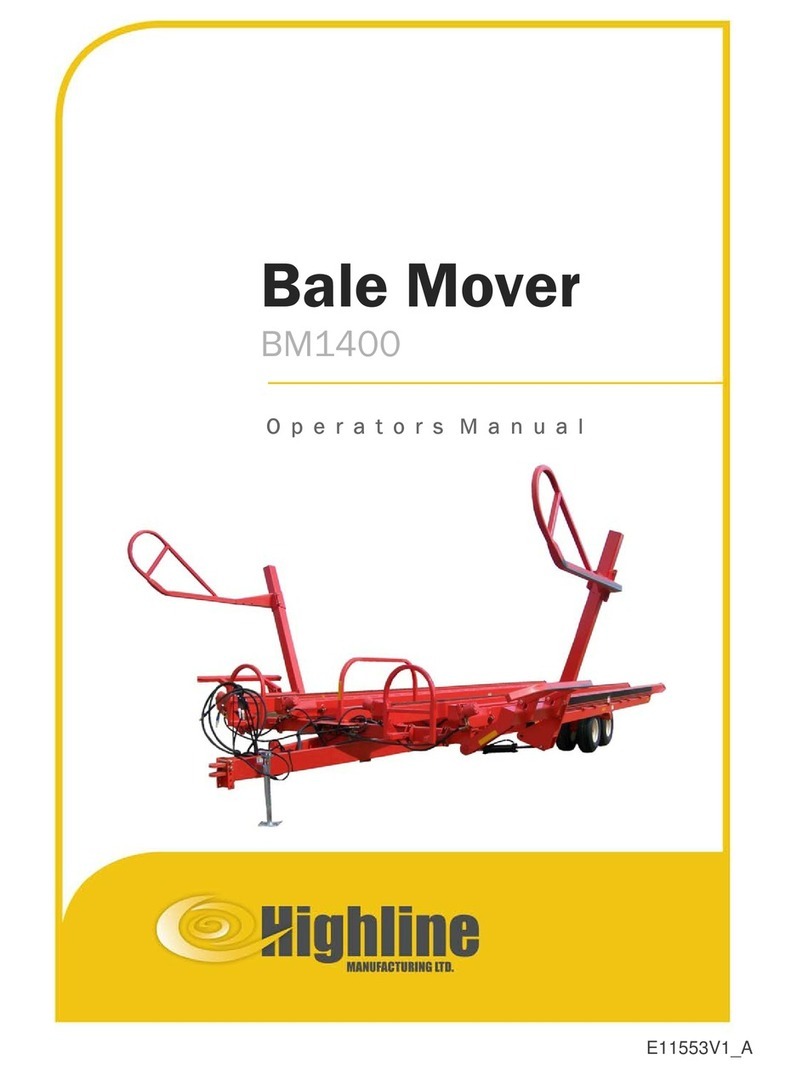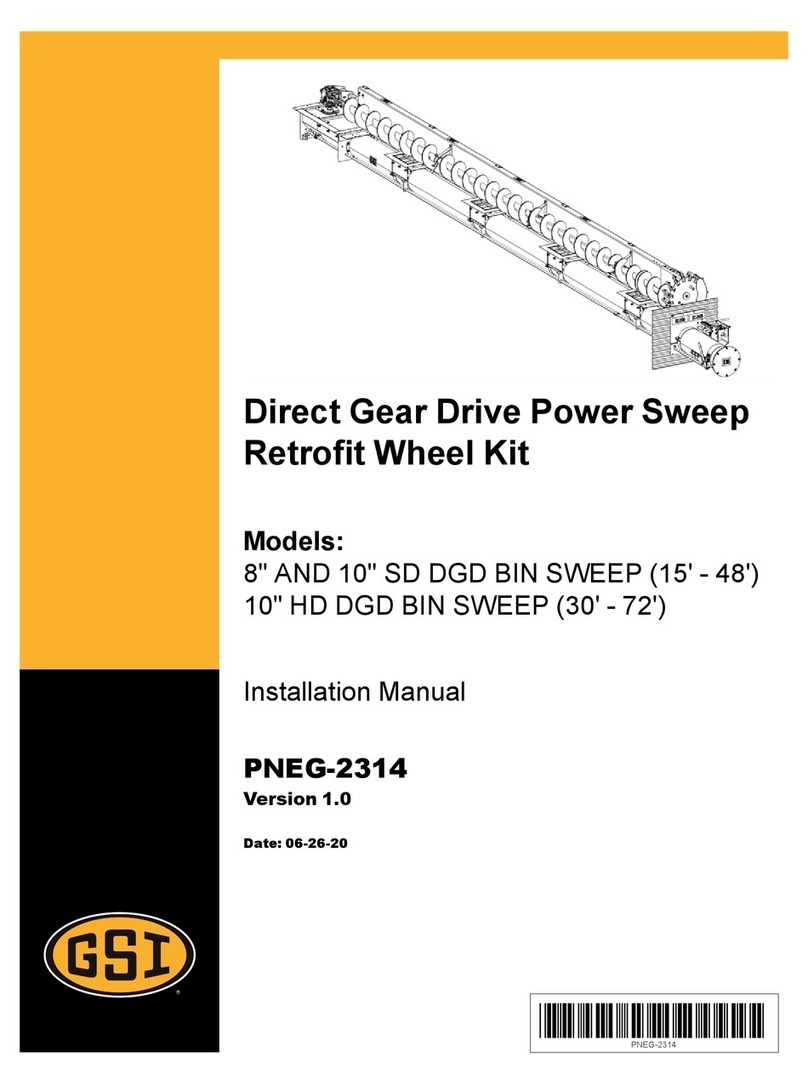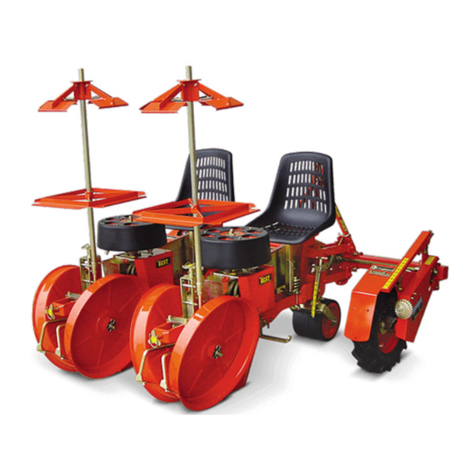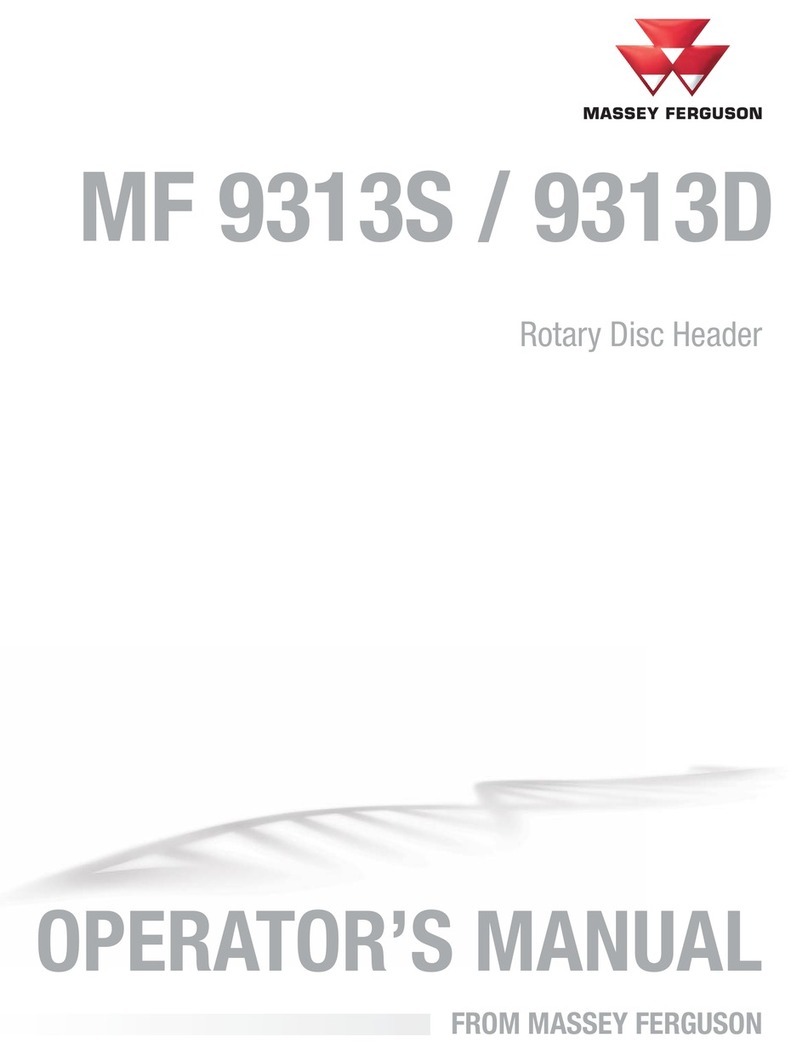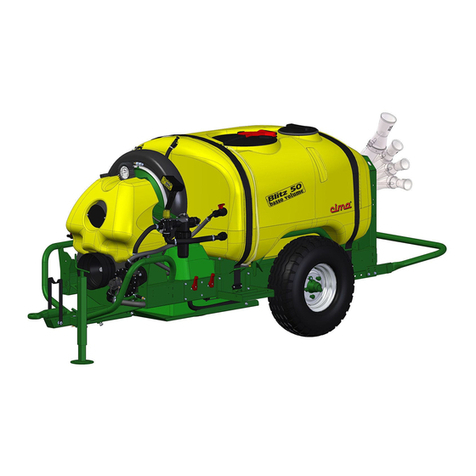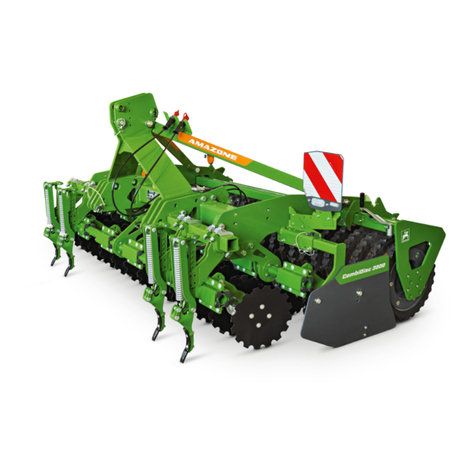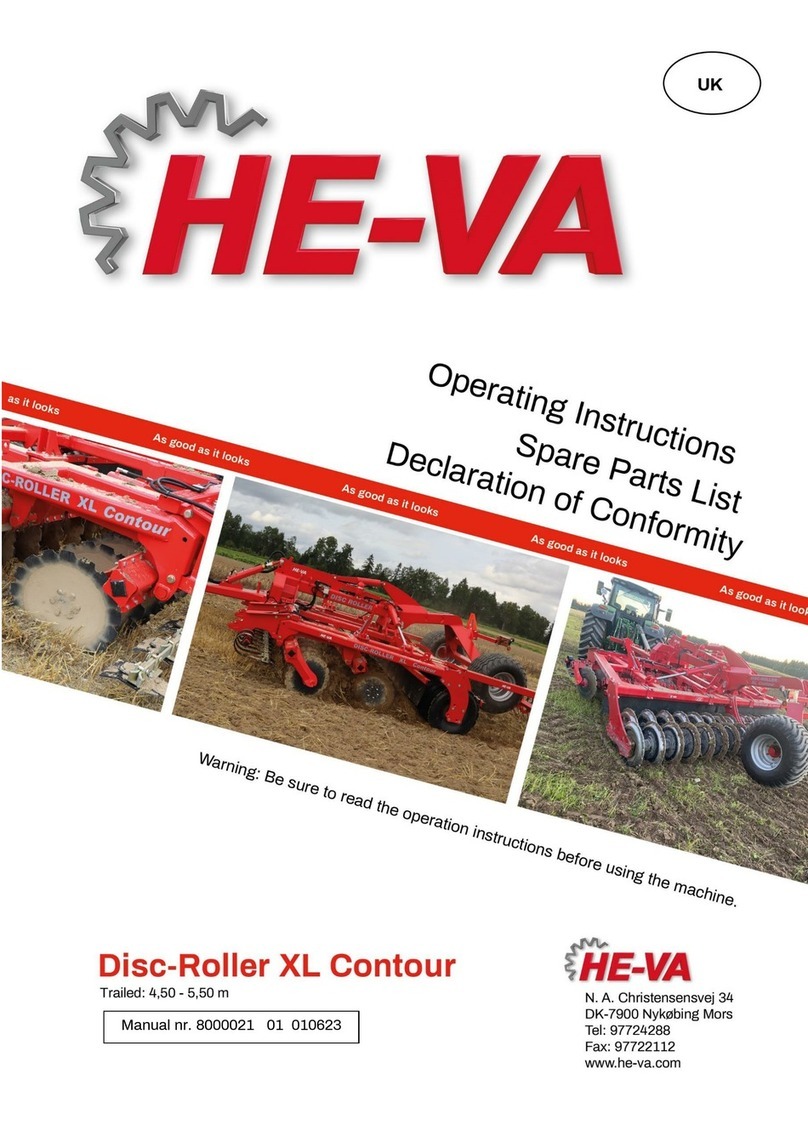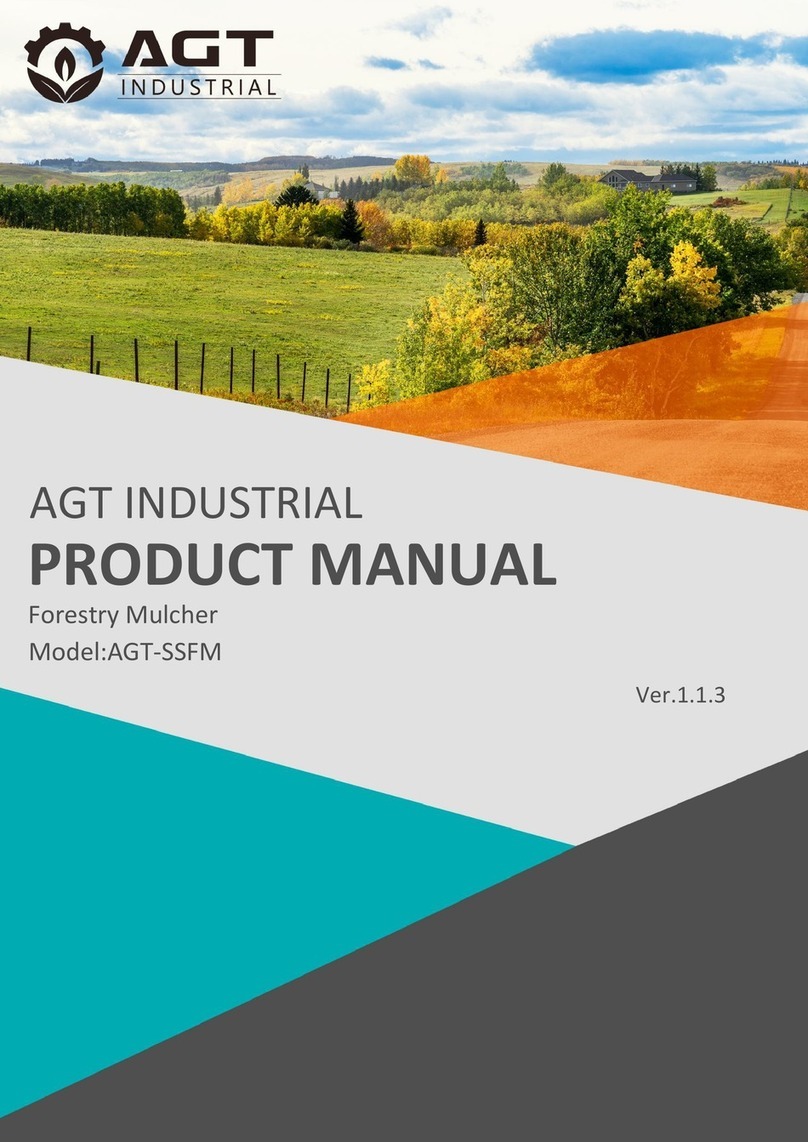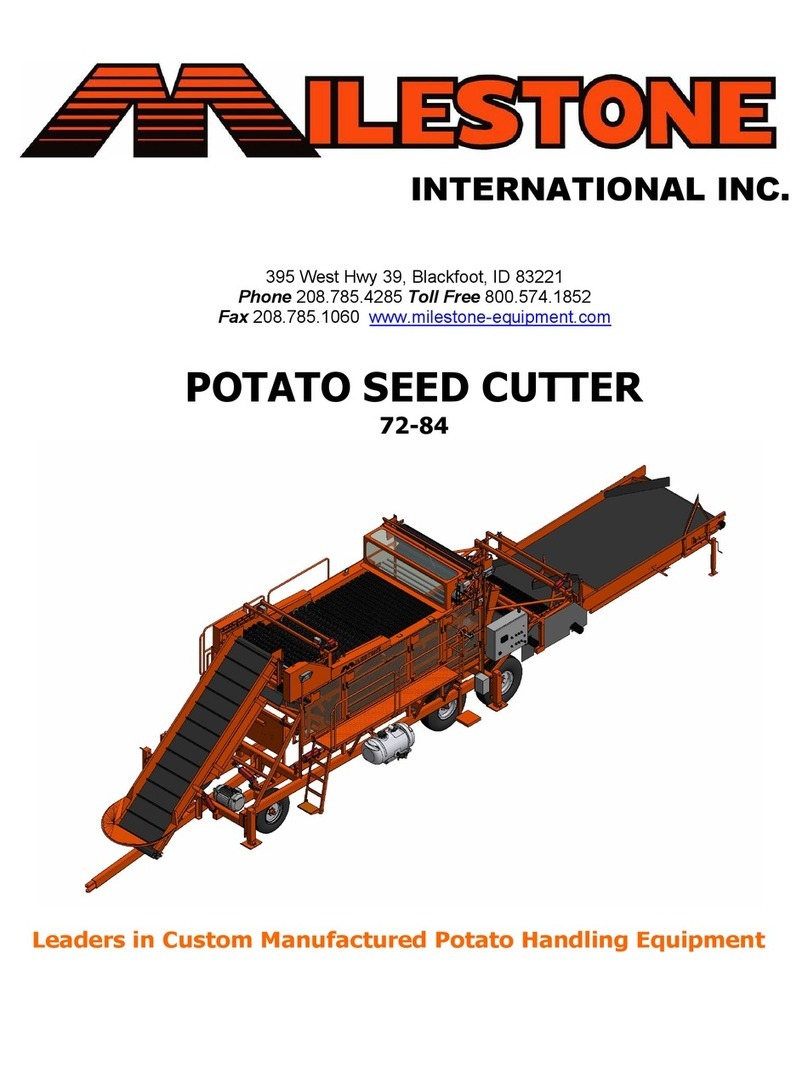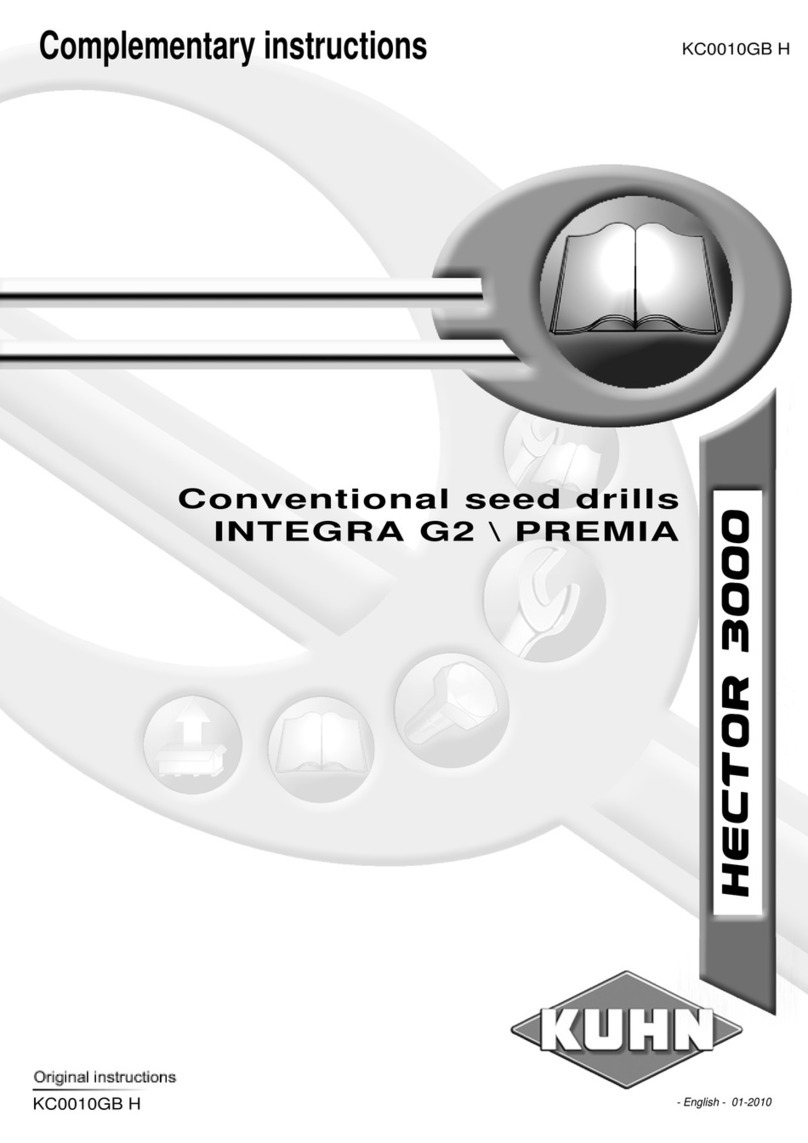
MINIMAX LINE -- INSTRUCTIONS FOR THE USER ROXELL - 001 - 2111
I--4
DIRECTIONS FOR OPERATING THE SYSTEM
Minimax line = feeding system for broilers, turkeys (0--14
weeks), layers, quails, guinea fowl and ducks
PUTTING THE SYSTEM INTO USE
The oil on the new auger and the tubes will slow up feed
transport at the beginning.
When using a new feeder line for the first time, fill up the
hopper with 25kgs of feed.
NEVER PUT YOUR HANDS INTO THE
FEED INTAKE BOOT WHILE FILLING
THE PANS.
Switchonthefeederuntilthisfeedisdistributed,thenrepeat
the procedure until the whole line is filled. By doing this :
-- you limit the load on the motor of a long feeder line.
-- atthesametime,youtesttheswitchesandmakesurethat
the feeder line has been properly installed.
-- you become used to the system.
Ifinsteadtherearesmallmarksofrusteitherontheinsideof
the tube as on the auger, we advise to mix the first 5kg of
feedwithaportion(¦1/4l)ofmaizeoil.Thisistoavoidthe
noise and trembling during the starting up.
CONTROL UNIT
The last feeder pan on the line (the control pan) is the most
important one. It must be emptied first because it starts the
next feed supply.
Take care that there are enough birds eating from this pan.
Birds are sensitive to light, moisture, draught and
temperature. They will shun places with an environment
deviating from the average. You can have more light above
the control pan by installing for example a small spotlight
which lightens the control pan only.
Keep the pan free of litter and manure. It has to be the most
attractive pan on the line.
Take care that temperature, moisture, ventilation are
constant at this location.
Morebirdswillfeedfromthecontrolpansifyouinstallthem
at a distance of 2--3m from the end wall. The same remark
goes for the outside line (next to the side walls).
FILLING THE HOPPERS
The drop tube of the feeder line furthest from the bin is
equipped with a level switch.
This level switch controls the feed supply from the bin.
If,forcertainreasons,thelastlineisnot enoughusedbythe
birds,itispossiblethattheotherlinesmightrunempty. This
can be prevented by using a time clock.
Thetimeclockshouldbesetsuchthatthefeederisregularly
emptied or decreased to a low feed level.
However,youcanhelptoensurethatenough birdseatfrom
the last line by taking care of :
-- ventilation
-- house structure
-- insulation
-- litter
-- distribution of feeders and drinkers.
Whenplannedcorrectly,youwillhaveaveryevenspreadof
the birds over the whole floor area of the house.
USING THE SYSTEM WITH ONE DAY OLD CHICKS
1. Suspend the 100kg hopper at the correct height.
The weight of the filled hopper will stretch the main cable
to which the chain is fixed when the installation is new.
The connection between the hopper and the first feeder
tube will then no longer be level. This can result in
premature wear and/or failures.
If necessary, shift suspension one or more links to level
the line.
2. Put ALL pans on the floor before placing the one day
olds. Then scatter the litter around the pans.
Take care that all feed windows open simultaneously
and completely.
Now the suspension cords of the tubes are suitably
stretched.
As the pans sink deeper into the litter after a few days,
the windows will remain completely open.
Thesuspensionsofhopperandcontrolunitmustalsobe
suitably stretched.
3. Warmupthehouseandthelitteratleast24hoursbefore
placing the birds.
Fill all pans with feed.
Switch off the feeder lines as soon as all pans are filled.
Thechicksnowhaveenoughfeedfortwodays.Onepan
with open windows holds about 1,6 kg -- about 0,6kg
with closed windows.
Refill all pans after two days and stop the feeder lines.
Repeat this every day until thebirdsare5--7daysold.
So you get a good control of feed intake during the
important starting phase.
You can now easily switch over to automatic filling by
means of the control pan. The feeder line starts
automatically as soon as this pan is empty. All pans are
filled.
You can feed automatically from the first day on, but
then you must regularly check feed intake atthe control
pan.
